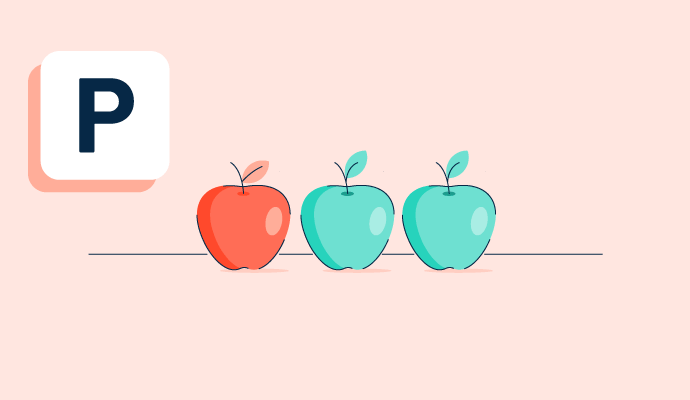What is product differentiation?
Product differentiation is the collective characteristics of individual products that make them distinct from other products in a business’s line, along with their differences from similar products offered by competitors.
Being able to distinguish what makes a product unique and superior to other options on the market is a critical part of any business’s marketing strategy. It also encourages customer loyalty, which can make the overall retention rate and lifetime value of individual customers higher.
If a business has a large number of products on offer, keeping track of the differences between each can be a challenge. Product information management (PIM) software can centralize this information, making it easier for sales and marketing teams to review product attributes and incorporate these into their promotional strategies.
Types of product differentiation
Customers weigh up several factors when deciding between products within a single company or between businesses. These product attributes can be categorized according to the following:
- Vertical differentiation. These qualities are measurable and quantifiable for the customer. Price and quality are typically objective, so a customer can decide based on the lowest price or the product with the most five-star reviews.
- Horizontal differentiation. Personal taste is something that brands can’t always account for, which makes horizontal product differentiation more difficult to promote. These are subjective measures without quantifiable data to support them. If products across brands have similar vertical factors, horizontal differentiation becomes more important.
- Mixed differentiation. This is the most common approach to customer decision-making. Both horizontal and vertical factors will be considered, with the individual customer prioritizing different criteria. For instance, the price of a new car will likely be considered first, but features or aesthetics may also be crucial factors for a customer when making the final decision.
Basic elements of product differentiation
Not every product can be differentiated using every possible factor. Most businesses establish their product's unique characteristics using factors like:
- Price. This is often the first factor customers will look at. But the lowest price among competitors isn’t always the best option. For example, a higher price for particular goods may indicate luxury or quality, which can appeal to a certain audience demographic.
- Performance and quality. Compared to its purchase price, whether a product lasts a long time can be a critical factor that customers consider. Reviews about the longevity of a product versus a similar item from a competitor can make or break a sale.
- Design. Customers may be more likely to buy if a product is easier to use than a competitor’s or has a significant design feature that makes it more appealing.
- Features. The specific features of a product can add value for a customer, especially if they’re comparing products within the same business. Better features may increase the price, but these can often be worth the upcharge on the purchase price.
- Customization. The ability to customize certain products to a customer’s unique wants and needs can make the product more appealing. This is particularly useful for marketing teams, especially if competitors don’t offer the same level of customization.
- Location and service. For brick-and-mortar businesses, the physical location of a business can make a big difference in its success. This is especially true of small, local businesses in their communities. When a customer is comparing them to a national company, businesses that use local produce or hire local people may be more appealing than a bigger corporation.
Benefits of product differentiation
Beyond building brand loyalty, product differentiation allows companies to stand out and gain a competitive advantage in their market. Other benefits include:
- Adding additional value to products. Whether the value is real or perceived by customers, product differentiation can make individual options more enticing when purchasing. This is true when customers compare brands and multiple items within a single business.
- Narrowing a target audience. Greater differentiation naturally means losing some of a business’s potential audience. However, this isn’t always bad. Focusing on a smaller section of an audience with targeted features that they’ll like can often increase sales, as the product is a closer fit to their wants and needs. A wider audience will likely see a smaller sales percentage, which can lower the overall return on investment (ROI) of marketing efforts.
- Controlling costs for customers. In a highly competitive market, businesses know that the margins between their products are small. This makes it less likely for prices to vary widely between similar products. For the consumer, this price stabilization gives them access to products at a market-reasonable rate.
Best practices for product differentiation
With several possible differentiation factors, knowing where to focus attention is a critical step that can be the difference between increasing sales or stagnating. When building a product differentiation strategy, businesses must:
- Have a clear understanding of their place in the market. Before a product is even developed, businesses should know exactly what makes their proposed idea special. Executing a strong product design plan requires a deep knowledge of what products are already on the market, who competitors are, and what will make this new product better or different.
- Know the target audience's wants and needs. A product can only be a success if there’s an audience who wants it. Creating buyer personas is an effective way for businesses to narrow their audience and focus product development and marketing around the differences customers are looking for and not finding elsewhere.
- Keep up with reviews after launch. Even once a product has been on the market, businesses must continue doing customer research. Reviews are a good way to discover what a product may be lacking or features that aren’t working as expected. Ideas for additional differentiation factors can come directly from customers when this type of research is conducted.
Find out exactly what your customers want from your business with the help of product reviews software.

Holly Landis
Holly Landis is a freelance writer for G2. She also specializes in being a digital marketing consultant, focusing in on-page SEO, copy, and content writing. She works with SMEs and creative businesses that want to be more intentional with their digital strategies and grow organically on channels they own. As a Brit now living in the USA, you'll usually find her drinking copious amounts of tea in her cherished Anne Boleyn mug while watching endless reruns of Parks and Rec.






